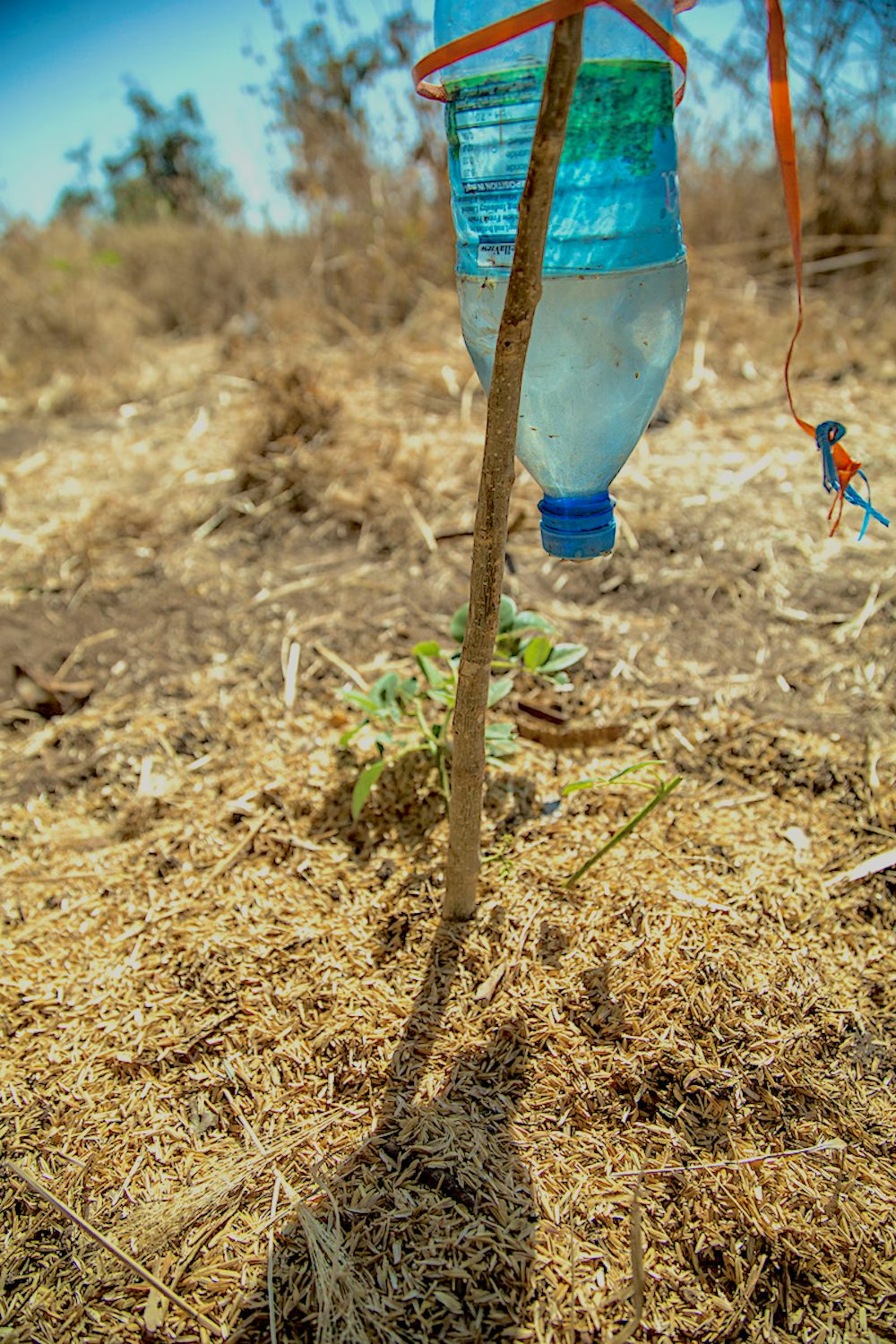It's not always easy to quench your thirst in Igunga, Tanzania. It’s even harder to water your garden. With an average rainfall of 21 inches per year, Igunga has earned its reputation as one of the driest districts in the country. But that doesn’t stop students of Jitegemee Primary School from cultivating something unheard of in this drought-prone area: a tree nursery. Using discarded plastic bottles and a little ingenuity, they have devised an earth-friendly method of irrigation to keep their saplings hydrated and thriving, even when summer rains are nowhere to be found.
You can use the same method at home to repurpose the plastic bottles in your recycling bin and keep your garden green — and your water bill low — in the warmest weather.
WHAT YOU’LL NEED
A plastic bottle (any size; the bigger the bottle, the longer it’ll water)
Something sharp (a small nail and a hammer or a thumb tack work well)
Scissors or a serrated knife

STEP 1 – WASH ‘N’ PEEL
Rinse the empty bottle with water and remove the label.
STEP 2 – POKE
Using the sharp object of your choice, pierce the top of the bottlecap four to eight times. Keep in mind that the more holes you make, the faster the water will drain. Once pierced to your satisfaction, replace the cap on the bottle.
STEP 3 – TRIM
Using your scissors or serrated knife, remove the bottom inch of the bottle so that it is completely open.
STEP 4 – SET UP
Using strong twine or string, tie the bottle (cap-side down) to the sapling or shrub that it is meant to quench. If you’d prefer to water your flowers or herbs, make several bottle irrigators and bury at intervals (also cap-side down) in your flower bed. Note: If you choose to do this, you should only need to bury your bottles deep enough so that they can easily stand upright.
STEP 5 – POUR YOUR PLANTS A REFRESHING DRINK
Pour water into the open end of the bottle. That’s it. You’ve done it! Check the water levels in your irrigator daily and refill as needed.
